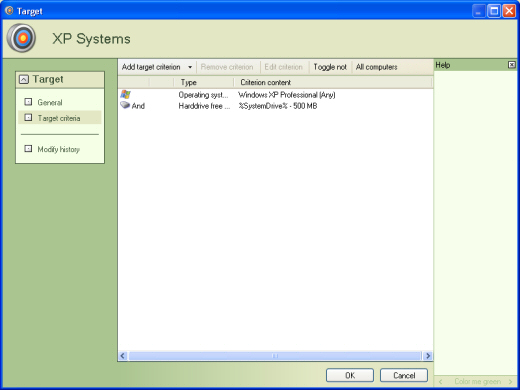
Installation
The setup process provides a very simple interface to assist you in getting the prerequisite dependencies and configurations taken care of- it is not difficult, but it is made much easier by this helpful front end (see image at right).
If you are running on a Windows 2000 Server, you can install the server portions (you'll need to install the v2.0 of the Microsoft .NET Framework) on your server, but he management console requires Windows XP or Server 2003.
The client installation requires MMC 3.0, which even on my very up-to-date PC required installation, but as with all requirements- Specops does a good job of walking you through it, with source provided in the distributable to ensure you you get what you need.
What's that MMC 3.0? What is that you ask? As a tool geared toward those frustrated with group policy- the Specops Deploy Management Console is available from within the familiar Group Policy Management Console (GPMC) interface (see snapshot below).
The same controls in the same easy to manage interface are also provided via its own Specops Management Console, but the full functionality is available from both of the available methods- so choose whatever you like best!
Adding Packages
Adding a package is simple, yet still very configurable- simply you choose what type: an MSI package, an MSP patch (new in this release), or a legacy setup. When choosing a Windows Installer package, the descriptive property fields are automatically populated. You may specify additional properties (bypassing the need to create a transform for every little property value!) and you can choose pre and post installation and uninstallation commands which may save you from spending lots of time conditionalizing custom actions to accomplish the same in the MSI itself.
Specifying Targets
When specifying targets you can now build target criteria using WMI queries, and several are built in using a simple interface for your convenience:
-
Computer manufacturer and model
-
Bios
-
Hard drive size
-
Processor speed
-
Memory size
-
IP Address range
-
Client Language
-
Environment variables
-
Registry values
-
INI/XML file content
-
Installed software
-
Files on client
When adding multiple criteria, targets will only be hit if they match all listed criteria specified (no OR operator). However, should you find a need for such a target group the custom WMI query is available to get the job done. In fact a nice interface is even provided for getting sample data and testing when building your own WMI queries !
You can have the deployment job easily install, advertise or publish (publish is newly supported in this release) the package and can have the source run from the network or cache locally for the installation with options to have it remain on the system or remove when complete.
Probably the only thing I don't care for (there is very little I can say that it negative about Specops Deploy) it would be that while the dialogs presented for adding packages, targets and deployments are presented using the layout of a wizard, there is no "next" button. The initial screen is presented and you fill it in, but to get to the next page of options (in some cases required options as in this target dialog) you must use the navigation links on the left side of the window. This is something you should be able to get used to quickly, but I often find myself filling out the initial screen and pressing "ok", which closes the dialog and I must go back in and edit the item to select the additional options I desire.
Deploy!
Installation time will occur when the target system refreshes its group policy information-- this means that the installation is not instant, but that it will happen within 2 hours of the specified time (which is as long as any other Group Policy update would take). By default policy updates are set to 90 minutes, plus a random interval between 0 and 30 minutes. However, you can adjust this default or event force an update using GPUPDATE.EXE (or “SECEDIT /Refreshpolicy machine_policy” on Windows 2000) and Specops Deploy take action right away.
There are configurable options for how reboots should be handled and you can allow the deployment to be postponed by the user if you wish-- displaying an optional pop-up and display message. For legacy setups the user interface is hidden by default, but you can optionally have the automation displayed. Also added in this release is HTTP support for BITS downloads (a very nice feature for those working with slow links).
I know I said I would focus on the new stuff here, and there is not much new by way of reporting features, but I just have to mention here now great the real-time reporting is. Knowing Group Policy deployment alone provides only local event log entries that you must dig through to get any answers- stepping up to what is offered by Specops could not be a better experience. Check out the coverage of the reporting features in the full 3.0 review or (better) download the trial version and see it in action for yourself.
Closing
Lots of new stuff here for a minor point release, but there you have it: significant new features added to an already impressive deployment solution. How much? Pricing is published on the Specops website: it is very competitive at just under $11 per seat for a 500 node network. With a minimal client footprint, Specops manages to enhance Windows own Group Policy deployment capabilities to that of a worthy competitor to other much more complex and expensive solutions. If you use Group Policy today- do yourself a favor and take a half hour to see how much better things can be: http://www.specopssoft.com/products/specopsdeploy
02/19/06
Bob Kelly, AppDeploy



Comments